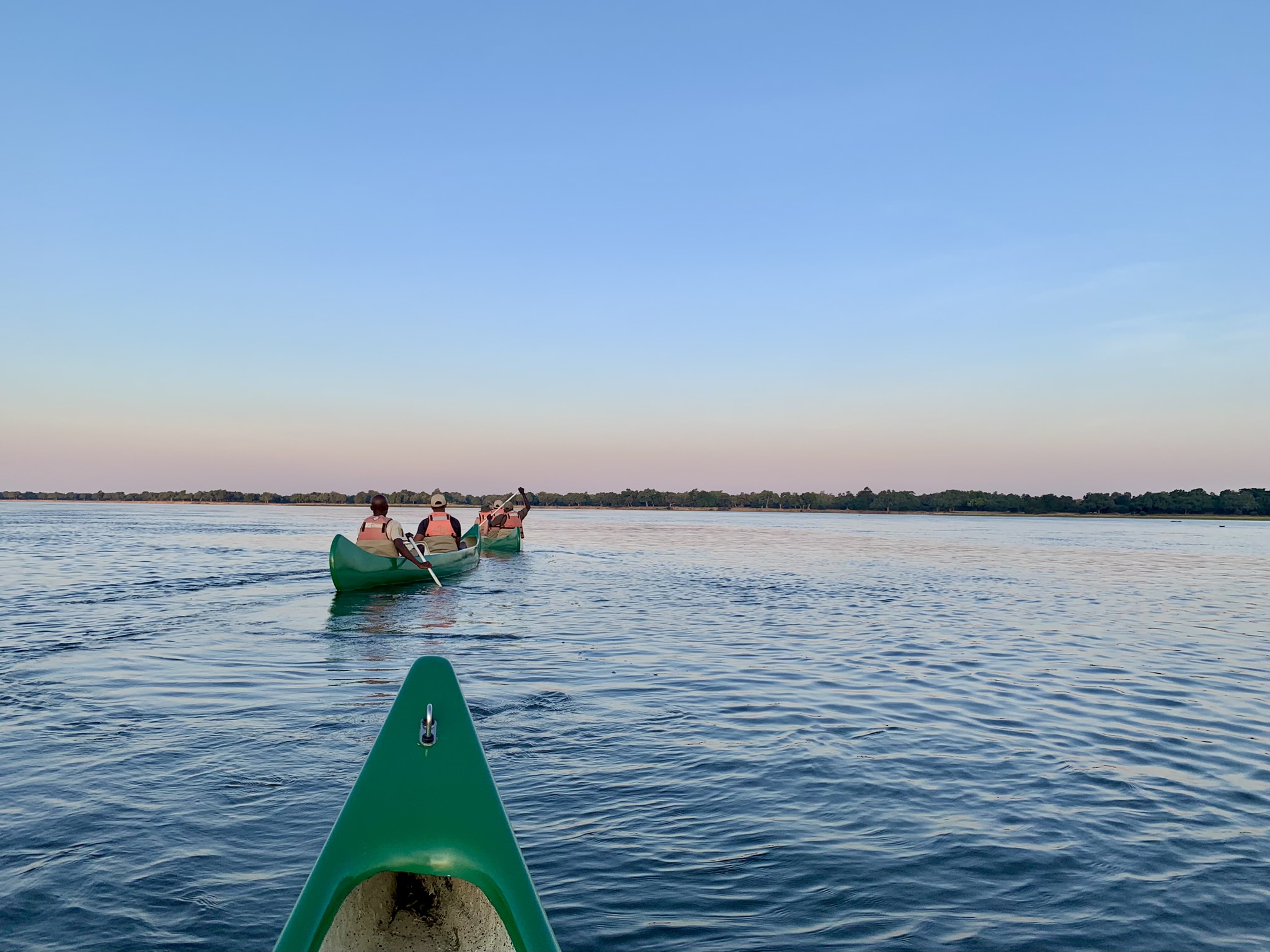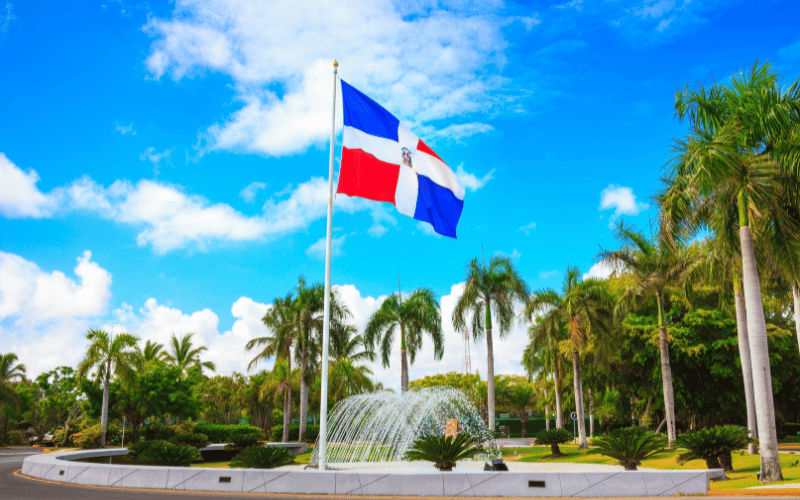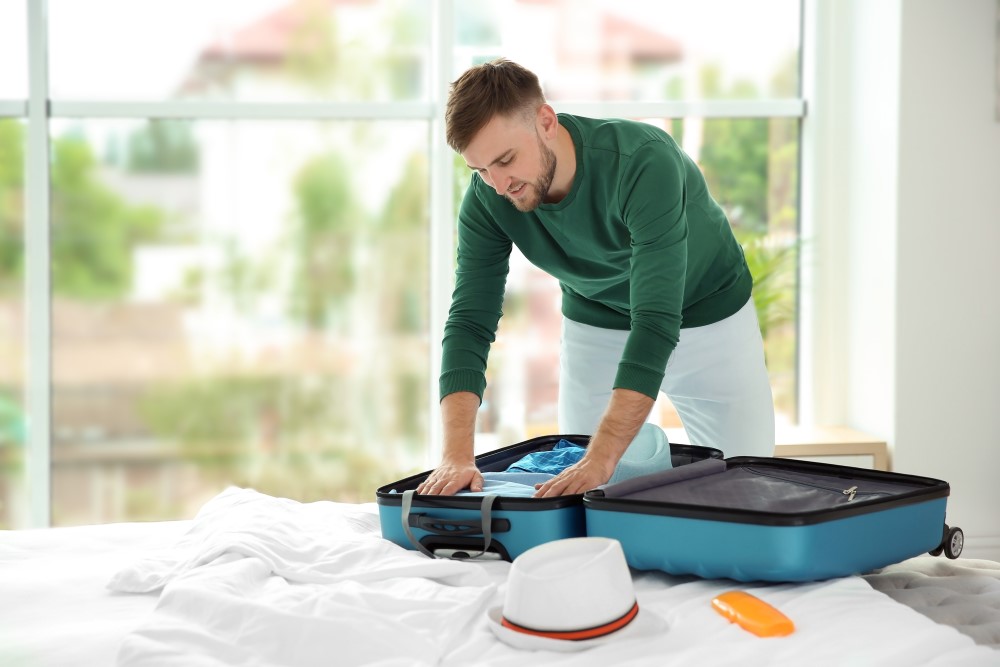See the colours change over the Zambezi escarpment as the current takes you gently downstream. Drift past makeshift islands, sculpted by the river, and watch for wildlife along the shore.
Where can you canoe on the Zambezi River?
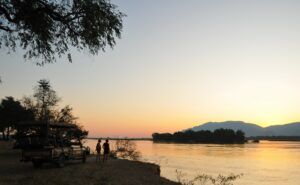 The Zambezi River is Africa’s fourth longest river. Its flows east for 2,700km from north-western Zambia to Mozambique, reaching its greatest width – nearly 2km wide – as it tumbles over a series of ledges forming Victoria Falls.
The Zambezi River is Africa’s fourth longest river. Its flows east for 2,700km from north-western Zambia to Mozambique, reaching its greatest width – nearly 2km wide – as it tumbles over a series of ledges forming Victoria Falls.
The Kariba Dam constructed in the 1950s is the other notable feature along the river’s course. The Dam provides a valuable source of power (and water) for both Zambia and Zimbabwe.
Canoeing can be enjoyed either upstream or downstream of Victoria Falls where the river is wide, and the water is languid.
The section of the river around Victoria Falls itself is known as the Middle Zambezi – word-famous Grade 5 rapids here attract white water rafters from around the world.
I combined a stay in Victoria Falls with safari time in Hwange and Mana Pools National Park which sits right on the Zambezi, downstream of the Falls. Hwange and Mana offer a brilliant contrast – one having no permanent source of water, and reliant on waterholes, and the other very much focused on the river. You can also canoe from Zambia’s Lower Zambezi National Park, which sits directly opposite Mana Pools. Both are superb for the variety of activities on offer including walking, 4×4 safaris and river activities (fishing, boating, canoeing).
My guide, Cloud, recommended the afternoon as being the best time for canoeing. He described it as a ‘wonderful relaxing way to spend an afternoon.’
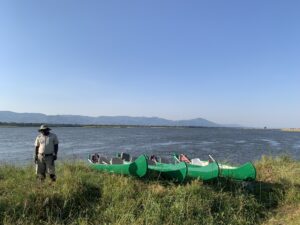 The safety briefing on the riverbank
The safety briefing on the riverbank
I stayed at a couple of different camps in Mana Pools. Canoeing was done from Zambezi Expeditions camp, a wonderful small semi-mobile bush camp right on the banks of the river. The launch site was a short game drive upstream from camp.
On arrival at the launch site, our group split into pairs, put on life vests, which were provided, and met with the river guides. Each canoe seated three – two guests and a guide in the stern. We each had a paddle.
Cloud explained that all four canoes would travel bow to stern following the one in front as closely as possible. Cloud was in the lead canoe – he would tap the hull of the canoe and slap the water’s surface with his paddle to alert any hippos that we were coming. He carefully explained that this is all that is usually required to encourage the hippos to move off, but it was also important to be vigilant.
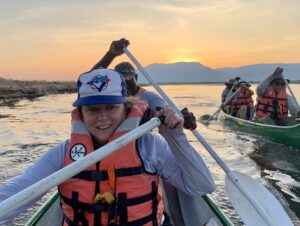 We were warned not to put anything over the edge of the canoe into the water (because of crocodiles) and to look for V shapes which could signal an underwater hazard, such as a fallen tree/branch.
We were warned not to put anything over the edge of the canoe into the water (because of crocodiles) and to look for V shapes which could signal an underwater hazard, such as a fallen tree/branch.
We were also advised what to do should we find ourselves in the water for any reason – stay calm and still, float as close to the surface as possible and listen to advice.
How long did the activity last?
A couple of hours. We arrived at the launch site at around 3pm where we had a briefing. We paddled downstream with the sun setting behind us, finishing on the riverbank, close to our camp, for sundowners and for the most glorious sunset at 6pm.
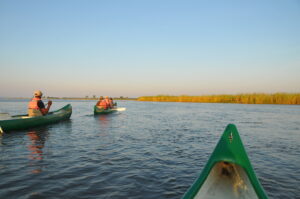 What do you see?
What do you see?
There are beautiful views all along the shore and across the river to the escarpment in Zambia. Being on the river provides a distinct perspective of this wild area as you drift along almost silently, assimilating yourself with the beautiful landscape. Being in the canoe offers great bird-watching opportunities too, with just the soothing splash of water lapping against the hull, you can enjoy thrilling close encounters. We saw Goliath Heron, kingfishers, fish eagles, bee-eaters and many more. We also saw and observed lots of hippos and crocodiles, waterbuck, and several large bull elephants, who had waded across the river to graze on the islands.
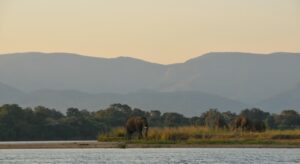 Is it demanding work?
Is it demanding work?
You go with the current, so this is not a strenuous activity. You do need to paddle, and you must work harder at certain times compared to others, but you are accompanied by a river guide throughout who gives instruction/advice.There were padded bench seats (with supportive backs) in our canoe, so I was able to sit in a comfortable raised position with my legs stretched out in front of me in the bow.
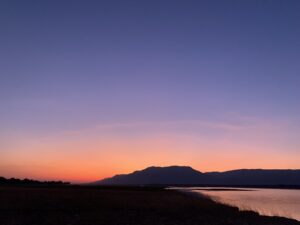 What should I wear for canoeing?
What should I wear for canoeing?
You need to be comfortable and cool and have freedom of movement to get in and out of the canoes. You also need to think about the fierce African sun. I wore a wide brimmed hat and sunglasses. If you wear shorts and a T shirt, it might be worth having a scarf/sarong or kikoi which you can use to shade yourself – the sun was on our left-hand side and extremely hot for the first hour or so on the river. Most of us wore sandals which we kicked off once in the canoe. I took a dry bag for my camera/phone, along with a small suncream/insect repellent and water bottle. There isn’t a lot of room so if taking a dry bag try to keep everything compact.
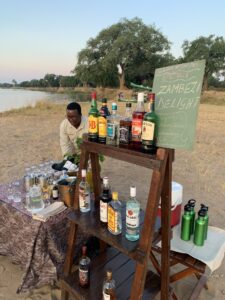 Did I enjoy it?
Did I enjoy it?
The activity was billed as ‘relaxing’ and once we had launched and navigated into the deeper middle section of the river away from the large pods of hippos hugging the riverbank …it did feel relaxing, albeit there were a few more hazards to be aware of compared to canoeing on the Norfolk Broads!
The sunset was superb, and we were lucky to see quite a lot of wildlife as we made our way downstream, with the highlight being the large bull elephants out on the island amongst the reeds. Cloud had told us we may not see elephant from the canoes at this time of year (April) because the river is still high after the rains. The dry winter months from July to September are optimum for the chance to photograph the elephants wading across the river.
The chorus of hippo song all afternoon was incredibly atmospheric, but especially so as the sun set. You could catch glimpses of yawning hippos backlit by the sun. The guides were fantastic and it was a lot of fun – especially the race at the end as we approached the riverbank, and the bar!
I thoroughly enjoyed my time on the river and would highly recommend it. Finishing on the riverbank with a large G&T and a blood red sky was magical, although it felt rather surreal as the John Deere tractor arrived to take the canoes back to camp!
For more information about safaris to Zimbabwe, including a couple of sample itineraries, please click here.
For more information about safaris to Zambia, including sample itineraries, please click here.
